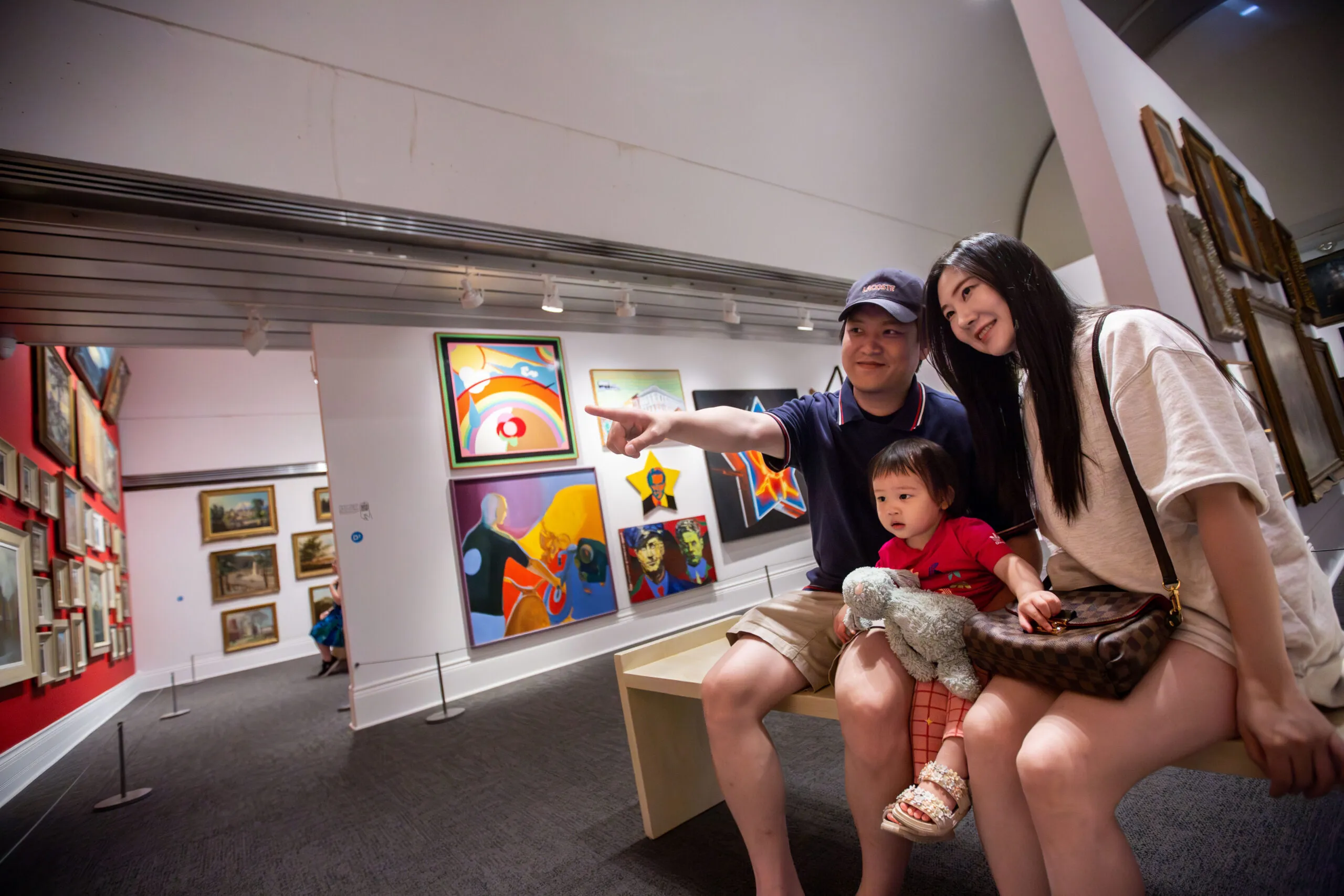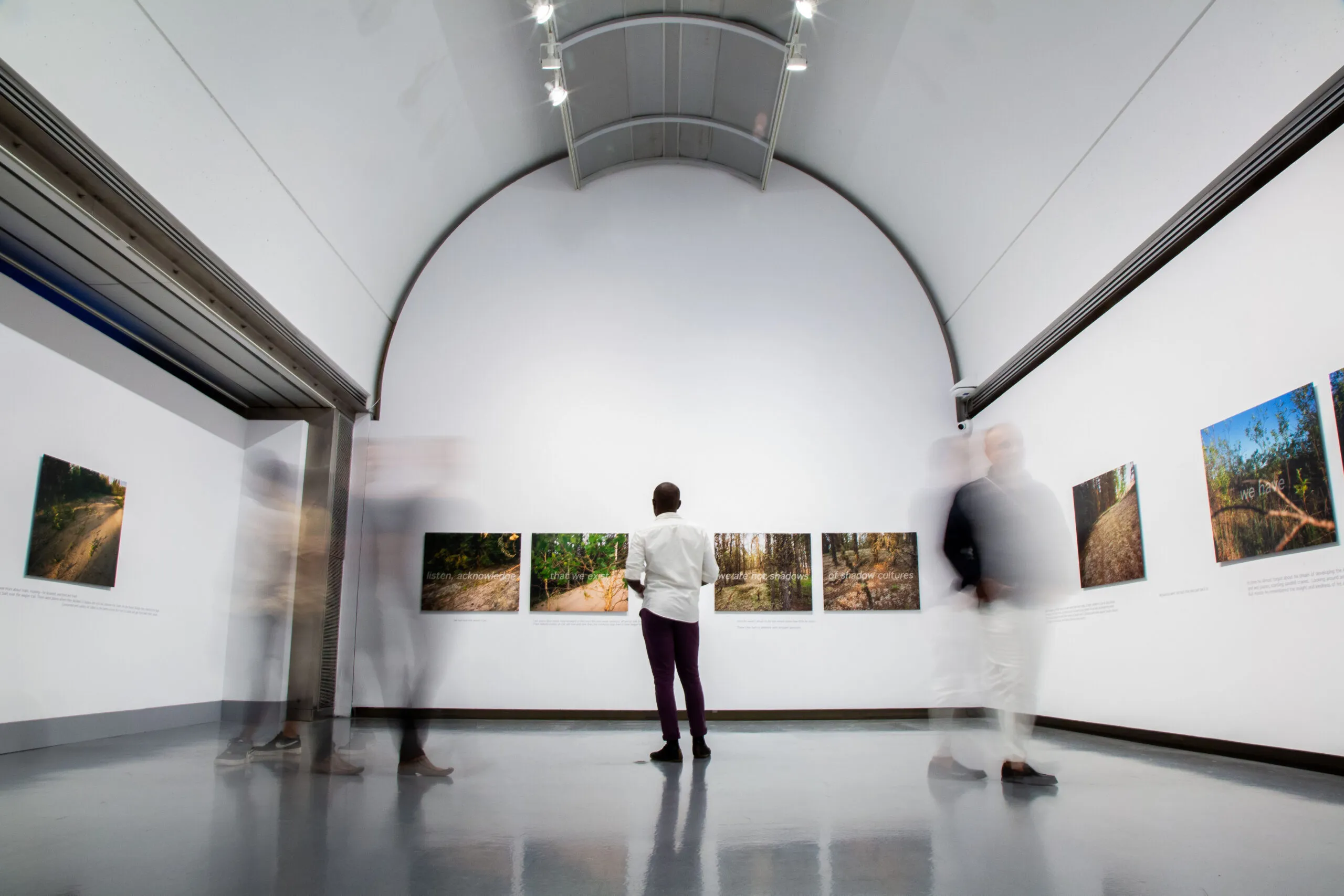
About
At the forks of the Deshkan Ziibi/Thames River on the traditional lands of the Anishinaabek, Haudenosaunee, Lūnaapéewak and Attawandaron, and operating within the homeland of the Chippewas of the Thames, Oneida Nation, and Munsee Delaware Nations, we are Museum London.
We’re more than a museum—we’re a vibrant cultural hub where art, history, and contemporary ideas come to life. Year-round, our exhibitions spark curiosity and conversation, while our programs engage learners of all ages. Thousands of students visit annually for hands-on experiences that make learning memorable and fun.
From guided art-making to film screenings, live performances, workshops, and community celebrations, our events invite everyone to connect, create, and celebrate art, history and culture together.
Our collection includes over 5,600 artworks—both historical and contemporary—spanning painting, sculpture, photography, digital media, and installation. Alongside this, we care for nearly 50,000 artifacts that tell the stories of Londoners across generations, including everyday objects that reflect our city’s evolving identity.
Museum London is a not-for-profit and registered charity, powered by a passionate team of staff and volunteers, and guided by our 2023–2027 Strategic Plan: Honouring and Amplifying Our Interconnections.
Our Mission
Museum London mobilizes art and history to build community and co-create an inspired future.
Our Vision
We are a leading art and history resource that connects communities, inspires change, challenges ways of thinking, and ignites creativity towards a more just world.

Board of Directors
Museum London is an independent not-for-profit governed by a volunteer Board of Directors elected in accordance with our bylaws. The Board consists of community representatives with various viewpoints, skills and expertise, who share a passion for art and history, and believe in the role of Museum London across our communities.
-
Sarah Padfield
Chair
-
Michelle Quintyn
Vice-Chair
-
Michael Wojtak
Treasurer
-
Shelley Kopp
Secretary
-
Laura Annable
Student Member
-
Nate Fehrman
-
Trevor Hunter
-
Tina Kalopisis
-
Jon R. Lavkulich
-
Florentine Strzelczyk
-
Diana Tamblyn
-
Carmelita Tang
-
Sam Trosow
-
Victoria Yang
Leadership Team
Julie Bevan
Executive Director & CEO
Julie is a believer in museums as places of belonging, imagination, and transformation. Before joining the team in 2022, Julie spent a decade in Nanaimo, BC, on Snuneymuxw territory, where she served in roles at the City of Nanaimo and Nanaimo Art Gallery, collaborating on contemporary art projects and learning programs, revitalizing cultural spaces, and building organizational capacity and community. She has served in positions at Glenbow Museum (Calgary), Belkin Art Gallery (Vancouver), and the National Gallery of Canada (Ottawa), and has been involved with Canadian Art Museums Director’s Organization, BC Museums Association, and others, as part of a commitment to learning, mentorship, and contributing to a thriving sector. Julie holds a BA Honours from Carleton University in Art History and a MA in Critical and Curatorial Studies from the University of British Columbia and was a fellow at the Getty Leadership Institute in 2017.
Jamie Fenton
Head of Operations & Visitor Services
Jamie Fenton joined in 2024 and is a creative leader with a passion for community development, art-based programming, and leadership. With over 15 years of experience driving impactful initiatives, she has led diverse teams to create opportunities and foster community engagement. Most recently, Jamie served at the London Children’s Museum where she fostered collaboration between local artists, organizations, and community partners, enhancing cultural and social connections with children while planning the museum’s growth and transition to 100 Kellogg. Beyond work, she takes pride in her roles as a music lover, artist, partner, and mom of four amazing young women.
Andrew Kear
Head of Programs
Andrew joined the team in 2019. Before his role at Museum London, Andrew was the Head of Collections and Exhibitions and Curator of Canadian Art at Winnipeg Art Gallery. He began his career at the Tom Thomson Art Gallery as Registrar and Assistant Curator. Andrew has curated many exhibitions, with a focus on Canadian art. He has delivered papers at numerous academic conferences, written for a number of art publications including Canadian Art, Border Crossings, and Sculpture, and taught Canadian art at the University of Winnipeg. Andrew holds a BFA from the Nova Scotia College of Art and Design, and Masters degrees in philosophy and Canadian art history from the University of Toronto and Carleton University.
Kaylee Temple
Director of Finance
Kaylee joined in 2020 and is an accounting and finance professional with experience in audit, finance, and business operations. She started her career at Deloitte LLP where she became a manager in the audit practice. Kaylee has a Bachelor of Management and Organization Studies with an honours specialization in accounting with distinction from Western University. She received her CA, CPA designation in 2017.
Abby Vincent
Head of Marketing & Development
Abby Vincent joined Museum London’s team in 2023. Previously, Abby served at Western University’s McIntosh Gallery, where she spent seven years in positions related to communications, operations, and administration. Throughout her career, she has worked with Toronto-based charitable organization Partners in Art, and in London at DNA Artspace, the Dundas Street Festival, the London Fringe Festival and on the executive board of the Forest City Gallery. In 2015, Abby co-founded Good Sport, a grassroots studio and exhibition space in London’s core. She holds a BFA in Sculpture and Painting and an MA in Curatorial Studies from Western University, along with a Graduate Diploma in Arts Management from Queen’s University.
Contact
General Inquires
Marketing & Communications
Development & Sponsorship
Donations
Press & Media Inquiries
School Programs
Venue Rentals
Volunteer Inquiries
Shop & Art Sales
Finance
Curatorial & Collections
Museum London staff conduct ongoing research. If you would like to share your work or a touring proposal with our curatorial team, please submit digital materials only, such as a website or portfolio link through the email address above. Due to high volume we are unable to respond to everyone. We will be in touch if additional information is needed. Only digital materials will be reviewed.
FAQ
Museum London began as the London Regional Art Gallery in 1940, operating from the London Public Library. In 1980, we moved to our purpose-built home at 421 Ridout Street North. We became Museum London in 2001, reflecting our dual focus on art and history.
Our striking building at the forks of the Deshkan Ziibi/Thames River was designed by renowned Canadian architect Raymond Moriyama.
f you are interested in making a donation of art or artifacts, or a financial contribution towards our ongoing work, please email donations@museumlondon.ca
Yes! Art Conservation Services Inc., located within our building, offers professional restoration for paintings, works on paper, and archival materials. Email info@artconservationservices.com for details.
